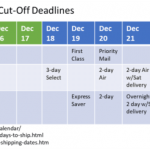The new marketing mindset
Columnist Justin Dunham believes that it’s crucial for marketers to understand and work with digital marketing technology — and that means that in order to get the most out of such tools, we need to develop practices that help us use them effectively.

I’ve said before that robots are the gatekeepers to your customers. And by “robots,” I really mean “software.” Consider this:
- Algorithms run Google’s search rankings, and they decide what users see on Facebook and Twitter.
- Marketing automation systems let us build engines to distribute content to millions (billions?) of readers, listeners and watchers.
- Marketers are building massive data warehouses that enable segmentation and personalization on a scale never seen before.
Software has eaten marketing, whether it’s the martech that your company uses, the ad platforms that Google runs or the worldwide, real-time content distribution system known as Facebook. The internet has created an opportunity for marketers: to reach most people on the planet, instantaneously, with a personalized and tailored message.
It’s a massive opportunity. In fact, the opportunity is so large it’s unmanageable. Technology, software and algorithms have emerged to help deal with the complexity surrounding it:
- We can outsource our targeting to ad networks, which can help us find the people most receptive to our messaging.
- We can use SEO tools to help us track our search engine performance and the factors that influence it.
- We can’t parse everything we hear on social, so we use listening and sentiment analysis tools to do that for us.
- We can’t personalize our websites for every visitor, so we set up simple rules to try to show the right content to the right people.
- And, of course, AI will take over all these things (eventually).
It’s critical for marketers to understand and work with digital marketing technology. But technology doesn’t manage all of the complexity for us, by itself. We need to develop practices that help us use digital marketing tools effectively, in order to maximize the benefit we realize from them. Here are a few ideas.
Less data, more context
We’re all familiar with the 20- or 30-page weekly marketing report. Or the spreadsheets that get sent out during the week, auto-generated by various tools. Or debates about the finer points of page views vs. unique page views vs. visitors.
Our capacity for data collection is enormous, and pulling it together isn’t all that difficult.
And yet marketers don’t always feel better off with all this data. That’s because it’s still hard to extract meaning from it.
We measure website traffic, and we know that more traffic is probably good. Except that if all of our new traffic bounces, it probably wasn’t worthwhile for us to acquire it in the first place. Then again, if the traffic that bounces was never going to buy from us anyway, that’s totally fine. But another consideration is whether the people who do stay actually turn into revenue.
Suddenly, the fairly simple question of measuring website traffic requires a lot more context to be understood correctly. And if you’re running a 20- or 30-page report every week, there’s no way you can invest enough time to truly understand what each number is telling you.
Look for clues, not answers
Of course, some things are still really hard to measure. I get asked a lot about what makes an effective home page, and there are ways to measure this: bounce rates, task completion rates, conversions. But none of these will give you the full answer, and commissioning a proper usability study on your home page (never mind the constraints that such a study may encounter when you go to implement its findings) is expensive.
And that doesn’t really help you with PR, product strategy, branding or organizational issues like the effectiveness of your sales-marketing relationships. A lot of these things aren’t (yet) susceptible to being rigorously measured.
Also, even the things we can measure are easy to mismeasure. When an average company has a dozen marketing analytics tools — and that link is from 2015 — most companies will have problems from time to time. It’s time-consuming to set all your marketing analytics up correctly, configure them consistently and maintain them.
It’s great that data won, but we need to accept that it doesn’t always give us answers, and we must think hard to about the best proxies for what we really care about.
Build systems for growth
I said above that software is eating marketing. It’s important to understand how all the software works, but it’s even better to start thinking about marketing as its own set of systems that let you build growth engines instead of running individual campaigns.
A system doesn’t have to be code. It can be a process, or a checklist, or a bunch of Excel spreadsheets. “Growth hacking” and “growth marketing” are good examples of the movement toward systems in marketing. At the core of these concepts is a set of processes involving coming up with specific ideas, testing them, measuring the tests, and then iterating. Here’s what Andrew Chen, one of the leading growth marketers, has to say about it:
Growth is a full model and system with linked parts and loops that align with your business. Tactics can be used to optimize loops, but the entire model must be well understood first.
Built properly, a growth system can help you generate consistent, incremental growth over time. And getting new results out of a growth system has very little marginal cost. The very simplest examples of marketing systems are websites, digital advertising programs and email marketing, all of which can get your message to millions of potential customers with little marginal cost.
But systems can help with product development, collaboration and everything else we as marketers do, too.
Plan flexibly and experiment heavily
Marketing campaigns used to be like getting on a train, with no way to stop until you reached your destination. Now it’s more like driving a car; you can stop and check the map whenever you want.
It’s hard to know what opportunities will be in front of you just a few months from now, and how the landscape will have changed. We can also see meaningful results from much smaller investments of time or money than we used to have to make.
Yet a lot of planning is still based around the idea of quarterly, six-month, or even yearly goals. Spend is committed in advance, and often marketing teams will decide what assets they are going to produce far in advance.
Things can change dramatically over the course of six months or a year, which may make changing your plan a good idea. But that’s not the fundamental problem with planning so far ahead.
The problem is that we learn by doing. And with digital marketing, the cost of trying lots of small, focused initiatives and collecting data on how they perform is very low. A successful display ad buy can cost you $500. A blog post can see thousands of views in a day. A small tweak to your front page, or even a reimagining, can affect bounce rates immediately. You can even A/B test it, instead of launching it to everyone right away.
But marketing planning hasn’t yet caught up with this new reality. In particular, very few companies are successfully using a truly experiment-driven process, where hypotheses are articulated and explicitly tested at high velocity, in order to drive growth.
Invest in collaboration
Digital marketing gives us so much to do. Dozens of channels, and unlimited targeting possibilities. Data gathering and interpretation. Hundreds of formats for our copy. Competition with millions of brands, and individuals, for our users’ attention. And sometimes, this all has to happen in real time.
Nobody can do it alone. Teams that work together effectively are the only ones that can manage in this new environment. At the same time, there are many reasons it’s hard to work together: different skill sets, styles and experiences. But bridging the gap between different members of the marketing team is critical for success.
When I say “invest in collaboration,” I don’t necessarily mean paying money for more technology. Tools are an accelerator, not a way of promoting collaboration by themselves. If your team isn’t ready, adding another layer to your technology stack exacerbates the original problem you were trying to solve. You still have your original problems, and now you (and your team) have to maintain and get used to a new set of processes as well.
Conclusion
In upcoming columns, I’ll look more closely at each of these aspects of the new marketing mindset, pulling in more direct examples and illustrating some of the advantages and supports that these strategies can bring to your team. Each aspect addresses one of the new complexities of marketing technology, and taken together, they can help your team take deliberate and informed action in an ever-changing field.
Some opinions expressed in this article may be those of a guest author and not necessarily Marketing Land. Staff authors are listed here.
Marketing Land – Internet Marketing News, Strategies & Tips
(38)













